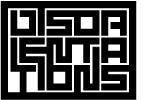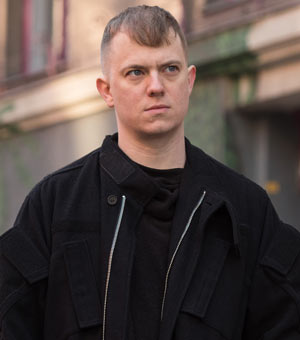Towards an Object-Oriented Writing – or – How Anti-Formalism Helps Me Dream: Notes on an Idea (plus an announcement)
by Travis Jeppesen on October 13, 2011
For a while, it’s felt redundant to me, the way we write about art. I could say way(s), though I’m not even sure about that plurality anymore. The quest has been ongoing – and off-and-on – since Disorientations came out (and before, really): How to go about formulating this “poetics of art criticism” I keep talking about. I keep coming back to a phrase from my essay “On the Expulsion of the Friendless Warrior”: “the object and its mysterious anti-nature.”
This line of thinking led me to another, more vocational thought: Why is it that we review exhibitions rather than individual works? When I am asked to write about film, I am generally reviewing a single film. Same thing when it comes to books. In art reviewing, the individual work of art gets short shrift. It’s always a long shot of the orgy rather than a real probing of any of the participating entities.
What I propose, then, is a new way of writing about art. A hylozoic revivalism. In response to this feeling of being underwhelmed.
Object-oriented writing is a new form – neither poetic nor art-critical, yet retaining characteristics of both – that attempts to inhabit the object. That is, a writing that positions itself within the work of art, and also including all the necessary contradictions and impossibilities embedded within such an approach.
It could be suggested that the father of object-oriented writing is the Gertrude Stein of Tender Buttons, the mother the Roland Barthes of Mythologies. Though OOW is more likely their aborted fetus, having been revivified on a UFO by an extra-dimensional alien race that exists on a plane parallel to our own, and returned to this reality in order to contaminate it.
Traditional art criticism is largely predicated upon a two-tier approach – describing and judging. I’m not saying we should necessarily neglect these, but the field needs to be expanded. (In my own practice, I would like to bring judgment back to the table. You might have other goals.)
So, focus on a single work. Go inside it. Resist those urges that would reduce OOW to the status of mere exegetic response. Object-oriented writing is not a branch of criticism, but an art practice that allows the writer to collaborate with the art object. This allows a multiplicity of possible writings, ways, approaches, to flow forth; the poetic impulse of formlessness is the form. Everything is included, potentially, each element assuming equal value (let the reader decide what matters least): the historical = the formal = the philosophical = the poetic = the narrative = the critical. Etc. So one “historical” notation, in the same paragraph, might “illogically” follow a formal description and/or poetic eruption. You might spill your ink attempting to elucidate the reasons why the object willed itself into existence (if you believe it has.) Or proving that the object you see before you does not, in fact, exist. Or why it perhaps shouldn’t exist.
There are no rules governing this operation, nor should there be. For as long as I can remember, I have lived my life by trying to escape structures – the imposition of structures upon my being. Is object-oriented writing a crackpot semiotics? Maybe. Though I prefer the term “alien aesthetics.” I’m not so interested in language (I am), but in using language as an extension of my bodymind machine to inhabit the object. If you follow me there, you’ll find some interesting questions arise. Such as: Do we let the maker inside?
I’m really interested in exploring the site of no possibilities.
I acknowledge that object-oriented writing will always be, in its essence, an act of failed translation. But I am interested, as always, in the potentialities of a spectacular failure, rather than adding my murmur to the monotone that comprises today’s art critical chorus.
For now on, disorientations.com assumes a new focus. It will serve as a dedicated repository, a generative machine, for instances of object-oriented writing – all of which will vary in length and design. I will begin by posting, in the coming days, instances of object-oriented writing that I’ve done in the past – before this idea, which has been brewing for some time, arrived at its present articulation – many of which have been previously published. I will also use disorientations.com to occasionally clarify any issues that arise surrounding, or embedded within, object-oriented writing.


3 comments
Interesting post. But, for an object oriented writing – for me, recently, it had been poetics, which perhaps allows more freedom – would not an attempt to inhabit the object assume an attempt at completely reveal the object, an impossibility? Of course, the action of attempting could be taken literally, i.e. never arriving or completing.
What I had thought of, and have been attempting(!), is to treat combinations of letters, words and phrases as objects and then create a continuance from one object to another, as the process of reading is carried out, by an alluding to a quality that is in the preceding object which is relative to a quality in the following object.
by Dillon on December 24, 2011 at 2:35 am. #
Towards an Object-Oriented Writing – or – How Anti-Formalism Helps Me Dream: Notes on an Idea (plus an announcement) « disorientations.com
mulberrybagssale.deeprelaxation.co.uk http://mulberrybagssale.deeprelaxation.co.uk/
by mulberrybagssale.deeprelaxation.co.uk on October 10, 2014 at 2:00 pm. #
[…] Towards an Object-Oriented Writing – or – How Anti-Formalism Helps Me Dream […]
by MARGINS on January 28, 2017 at 1:49 pm. #